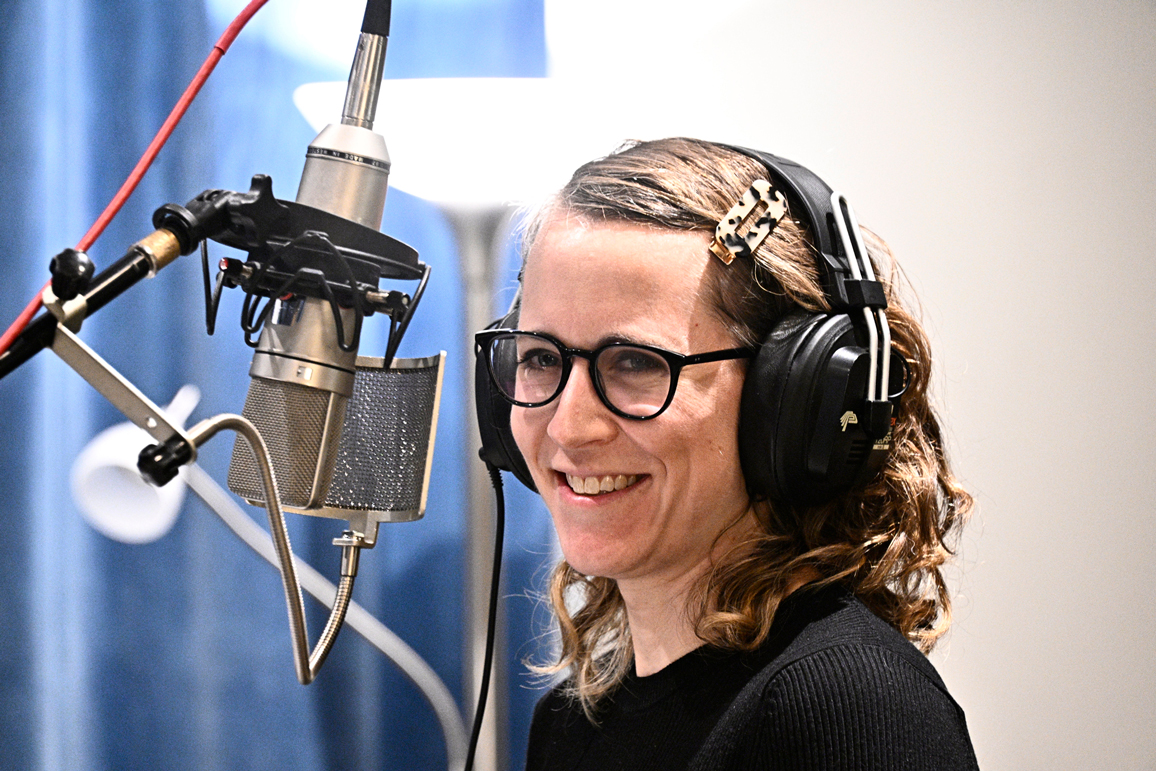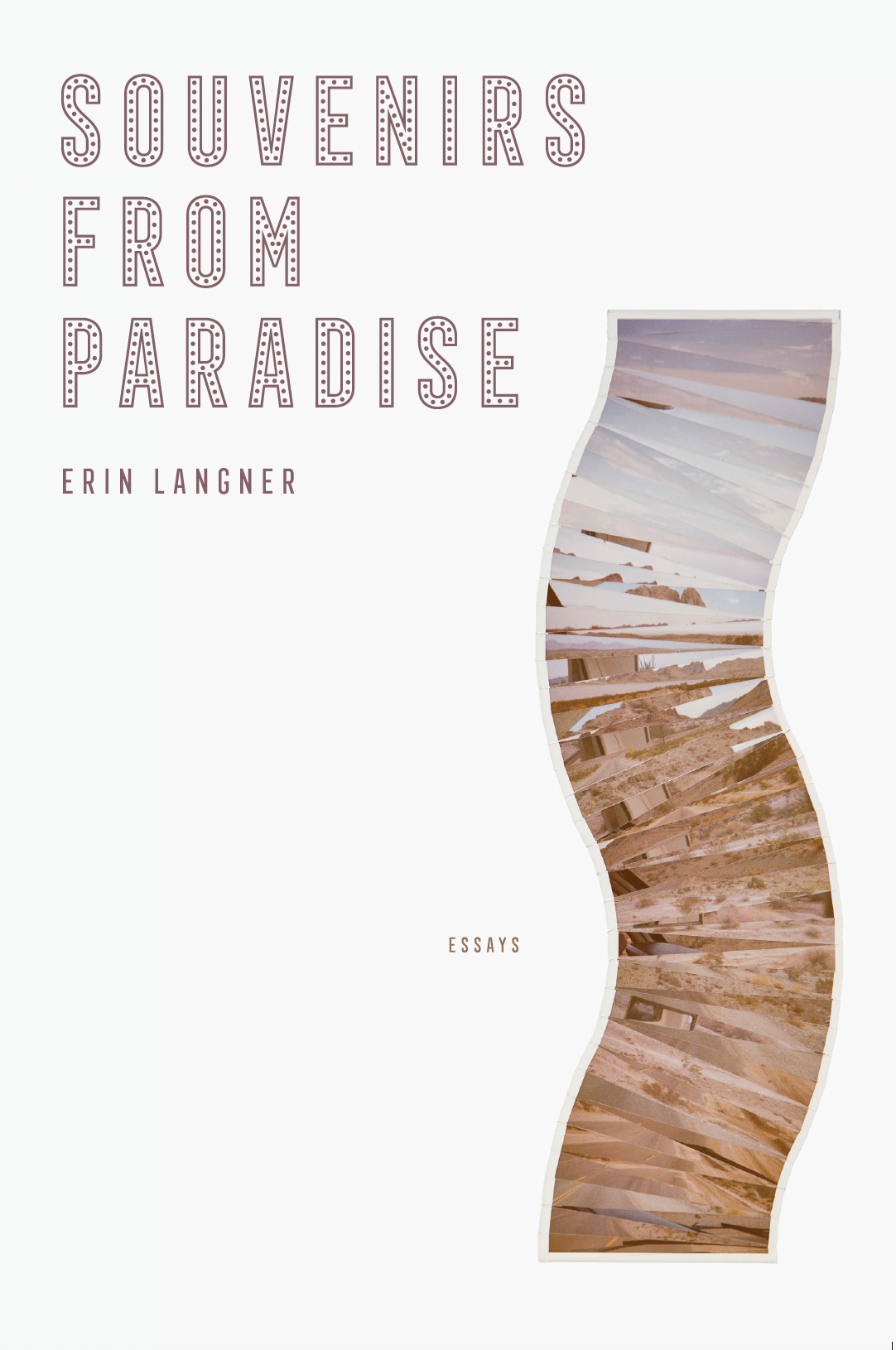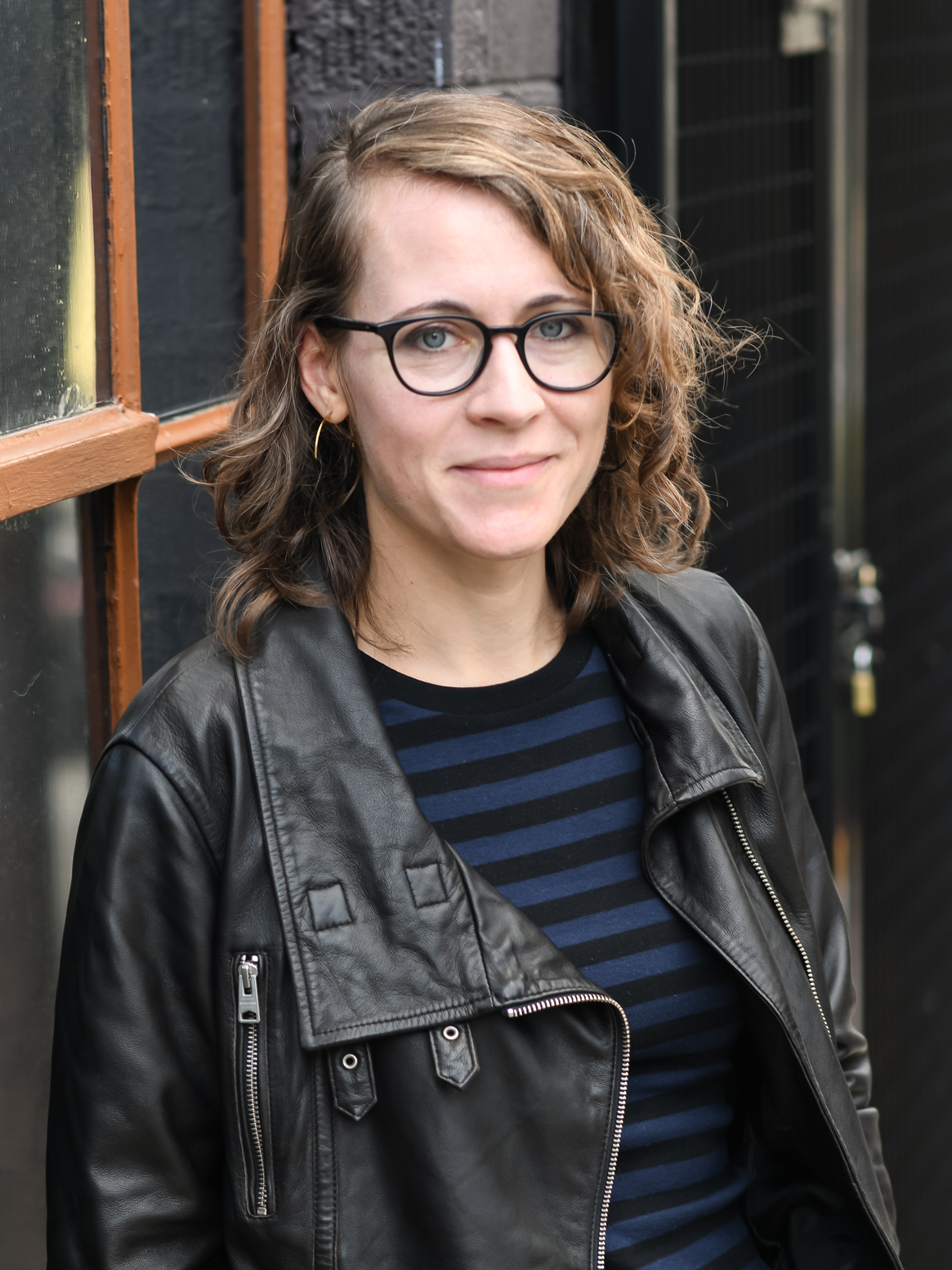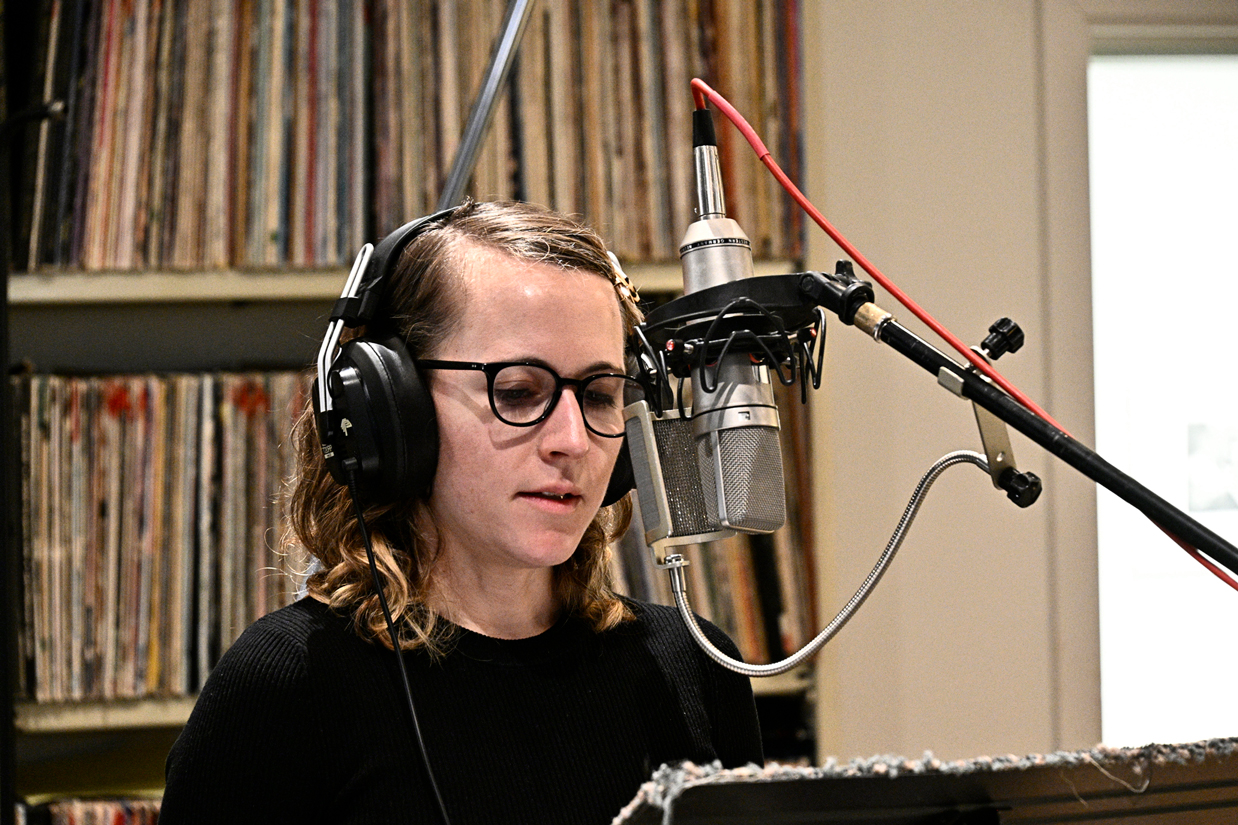This series highlights working artists currently on staff at the Frye Art Museum. The Frye has a wealth of talented Seattle-based artists working under its roof in many different capacities, each with their own dedicated arts practice outside of their work at the museum. Facilitated and written by Alexis L. Silva, Curatorial Assistant, this series is meant to highlight and celebrate these individuals, showcasing their amazing work and arts practices.

Photo: Sherwen Eng
By Alexis L. Silva
Las Vegas, Nevada, is one of the most iconic cities in the United States, known for its bright lights, 24-hour services, and hedonism. Walking through the Strip is like walking through Times Square, except with more gambling and drunk bachelorettes. Each LED screen or sign advertises some Cirque Du Soleil show, or a casino’s all-you-can-eat buffet with $7-lobster. You can find ginormous pools with waterfalls and all-day/night dance parties, or cabanas with all-you-can-drink bottle service. It truly is a place of paradise and escape.
I was born and raised in Las Vegas—the East Side, to be exact. My everyday consisted of 100-plus-degree weather, tumbleweeds the size of my mom’s 2003 Corolla (yes tumbleweeds are a real thing, and they are very dangerous), and vaqueros riding their horses through the neighborhood. My Vegas is a little different from your Vegas, in that mine never felt like paradise or an escape. Instead, it felt like a trap, enticing me to stay planted on the warm desert earth growing nothing but woes and bad decisions. Since leaving, I have learned to love it in different ways, the main one being that my family is all still there and when I go back, I am home.
I never thought I would meet someone in Seattle who knew as much about Vegas as I did. And then I met Erin Langner (She/Her). Erin is the author of the essay collection Souvenirs From Paradise, which chronicles her many visits to Las Vegas and how those experiences brought up moments of family, loss, and the need to escape. She also writes about art, architecture, and identity, with pieces appearing in Electric Literature, Fourth Genre, december, and more. Erin is the Frye’s Assistant Editor and Exhibitions Coordinator, handling many aspects in the implementation of the museum’s exhibitions and publications program and liaising with other museum departments.
I got the chance to chat with Erin and dive deep into her obsession with Vegas, the writing community in Seattle, and how privacy can be tricky when writing personal narratives. The following has been edited for length and clarity.
Tell us about your background. Where are you from? Have you always lived in Seattle?
I grew up in the Chicago suburbs. I moved to Seattle in 2005 for graduate school in museology at the University of Washington. I studied humanities at the University of Colorado and got started in art criticism through that program. I've been thinking a lot about growing up in the Chicago suburbs because much of the writing I'm working on right now is about that time, and I'm trying to take advantage of the fact that I've been going back more because after having a daughter, I've been bringing her to visit family. The first time I returned with her, being in the suburbs evoked all of these sensory memories.
I'm in the middle of changing my relationship to the suburbs right now, and I'm trying to embrace them a little bit more—because I left as soon as possible. Once I graduated high school, I had no inclination to return. I found it a little stifling and homogenous in the particular suburb I grew up in. It was famously a good place to raise a family. It also was a wealthier suburb and there was a lot of emphasis on brands and cars; those are all things I'm thinking about now, including why I wanted to get away from them, but also how much that time of my life is a part of who I am now. All to say I have a mixed relationship with the suburbs at the moment.
Walk me through your writing process. How do you know where to start and how do you know where to end?
Both of those things are very difficult. Sometimes knowing where to start can be easier. In the essays I'm writing now, I'm trying to bring together my creative practice and my work life at the Frye. What I'm doing is mining the art objects that have meant something to me at different points in my life, and those have been starting points in a lot of cases. For instance, an Alanis Morrisette song was a starting point. I was listening to a great podcast about it, and that inspired me to think about "You Oughta Know" now as an adult, even though it was primarily a song that meant a lot to me when I was, like, 13 years old.
Deciding where to end is always tricky because I usually have a lot of drafts, but occasionally I get a real banger where it just comes out pretty well-formed. But otherwise, I'm often going back and looking for the right structure to house the questions that I am asking. This can be difficult because usually my questions are not answerable at all. It's more about finding a way to resolve the writing without necessarily answering the question. It's a tricky balance.
I will tell you the secret to my book: the essay that appears first was one of the very last essays that I wrote. I did not write them chronologically at all. I had an early draft of that essay that I put away for a very, very long time. Then I came back to it towards the end, once I had a majority of the essays in good shape, and I changed it radically. I worked extremely hard on it because when you're trying to sell a book, the first 10 pages are what you use to sell it, or find an agent, or even just think about publishing it. My book was published through a contest, but those 10 pages are so essential. You have to grab your reader in those 10 pages.
What does the writing community look like in Seattle and how did you get involved? How do you stay involved?
The writing community in Seattle is incredible. It's large, diverse, and exists in many different places. I can only speak to the small avenues I've gone through, but I initially got involved through Hugo House. I was taking classes and I still try to take at least one or two classes every year. One of my regular teachers, Peter Mountford, became a close reader of my book. He then ended up blurbing it for me, which I was so appreciative of. I also got involved with the Writers in the Schools (WITS) program at Seattle Arts & Lectures. I was an administrator on that program, and I worked for poet Janine Walker, who oversaw WITS at the time. She's been an incredible entryway because she knows so many people through her work on that program and through her own work as a writer.
Last year, I received a Jack Straw fellowship, and that served as another great entry point to meet a lot of new, emerging writers I hadn't met before. It was amazing because the curator, Michael Schmeltzer, made an effort to select a group of us who were all very different. But we got along really well. I was so happy to meet all these new people in person, especially coming out of Covid.


So, Vegas. The Strip is made up of all these fake landmarks and fake architecture. It's almost like an adult Disneyland, where everything is crafted to feel like a set. As someone who writes critically and analytically about art and architecture, what drew you to Vegas?
The first time I went I did not expect to like it. As I talk about in my book, I was kind of like, “I don't know why I would go here. I don't gamble.” Someone told me that I would love it, and I wondered why they would say that, because it was someone who I felt really knew me. But I eventually went, and it was precisely what I thought it would be. In a lot of ways, it was exactly what people said. Like, lots of little—little Eiffel Tower, little Venice —but with chlorinated water. But then, it also wasn't what I pictured in my brain either. And I think that disconnect was very compelling to me. I thought, “What is it about this place?” I had been to Disney World many, many times and it wasn't compelling to me in that kind of intellectual way you're talking about. I thought, "Disney World is fun, I like it. I'd go back with my kids someday." But I wasn't compelled to write about it. However, when I went to Vegas, I was just unsettled by something that felt so familiar and not at the same time. And then, as I started writing about it, I began integrating personal experiences into my work a lot more.
When I started going to Vegas, I was like, “I'm going write about this architecture because that’s what is compelling me. I'm so interested in this architecture, and I write about architecture, right?" So, I workshopped an essay about Vegas architecture. And people in the workshop said, “Well, you do know a lot about Vegas architecture.” But that’s not really the effect I was going for. Ultimately what I want to do with my writing is connect with people. That’s when I started looking more deeply at what I was writing and what was resonating with people. The more personal stories that started out as a side note in these essays about architecture became the heart of the story as I reworked my book.
The very first time I went to Vegas we stayed at the Mirage, which has a lot of similar architecture to places I'd visited in Florida, where we went many times after my mother passed away when I was nine years old. That was something I'd never really talked about or wrote about. I mentioned it offhandedly in one of these architecture essays. But that was the part people latched onto. And I thought, “No, that's not what it's about. It's about architecture.” But I really want to connect with people, and this is where they're connecting. Once I realized that, it opened a new way of writing about architecture and Las Vegas. That became this great reason to keep going back and investigating. It was kind of pleasurable even though what I was ultimately investigating was grief. It became a good trick for me to write about these difficult things by applying this sheen of excitement and pleasure over it.
How did your experience in Vegas bring up these ideas of loss and opening up about these private aspects of your life?
The physical thing I noticed in Las Vegas that I wanted to investigate was the physical darkness or disjoints. At Disneyland, they're pretty good at cleaning up the darkness, whereas in Vegas it's a little messier, especially if you're looking for it. The casinos replace things all the time to keep people coming in. And so, I would notice things like where the old carpet ends and the new carpet begins. I think once I noticed that those contrasts were what I found compelling, I started to think about the place more in terms of darkness. And then I would go home and write. I wrote almost nothing in Las Vegas. It was impossible.
In one of your pieces for Electric Lit, you talk about being nervous to tell your family about the book, specifically your dad. What was that process like and how did it shape your opinions on privacy and writing?
I've always been kind of a private person, so the fact that I even moved into the realm of personal essays is still kind of shocking to me. Part of being a private person comes from my upbringing. Growing up in the Midwest, and in my family, we weren't very big on sharing feelings, especially dark things. After my mother passed away, we didn't really talk about it that much. I was sent to a school therapist and that was it. Coming around to this for myself was a huge process, but then I, of course, was writing about people in my life and writing about people very close to me.
My dad is a very private person. I delve into a lot of personal details that, as I was writing the essays, I tried not to think about, because I thought, “Who knows if this will ever get published, so I'm just going to write what I need to write in this moment and I will reckon with the problems of publishing it when they come up.” How to go about telling people is a very complicated process, especially when there are things people don't talk about within their own circles and friends. It became a very torturous question once I found out my book was being published.
I eventually shared the things with my father and other people who were in the book, and in some cases it was great. I wrote about a guy I hooked up with early in college: we hadn't spoken in quite a while, which was awkward, but he ended up being really nice about it and said he'd love to stay pen pals. Telling my family and telling my dad was difficult. Appropriately, he was surprised and upset. Ultimately, he bought the book, which I really appreciated. I feel better about our relationship even though we don't actively talk about the book that often. I would probably go about it a little differently when I have to do this again. It's on my mind as I write new work, even though I'm trying not to be inhibited by it. I am trying to be more mindful of the implications of writing about people in our lives, especially people whose names cannot be changed. And I think some of the people who've been more upset were not yet ready to confront that kind of honesty. Sometimes it makes it a little hard to maintain those relationships. But I hope that they all come back.
Tell us about your vision for the future of the Seattle arts and writing community.
I've straddled two worlds by being in the art and the writing community. I would love to see the two more interconnected. It was something that I saw through my last book launch. Souvenirs from Paradise is more about a travel experience, but there were a lot of people from the arts community who came out and were supportive of the book even though it wasn't directly about art. Which made me want to write about art for my next book. I would just love to see more cross-pollination. The arts chronically suffer from lack of funding and support in this city. I think the best thing we can do is come together. There are different strengths in each community. Coming together, I would hope that we could play off each other's strengths, learn from each other, and possibly collaborate. That's what I would love to see more of.
Where can we find you (socials, website, upcoming releases, etc.)?
You can find and buy Souvenirs From Paradise at Elliot Bay Books and Phinney Books. I have my website, erinlangner.com. I'm not as active on social media these days but you can find me on Instagram at @erins_sweater. Links to full essays from the book can be found here:
The Ganzfeld Effect
168 Hour on the Las Vegas Strip
She's Out of My Life
My upcoming book is another collection of essays which illustrate why we're drawn to the art that we are through my personal stories, and some cultural criticism as well. I start out thinking about it in terms of how artwork has shaped my identity and my perceptions of different roles like motherhood and things that have intersected with my life. It brings up questions like, can art really change us? Can it help us? Is art a way to help us out of some of these existential questions or not? Does it make it worse?
Release date TBD!
*You can also read more of Erin's writing here on the blog! Collection Connection: Childe Hassam is a great place to start.


